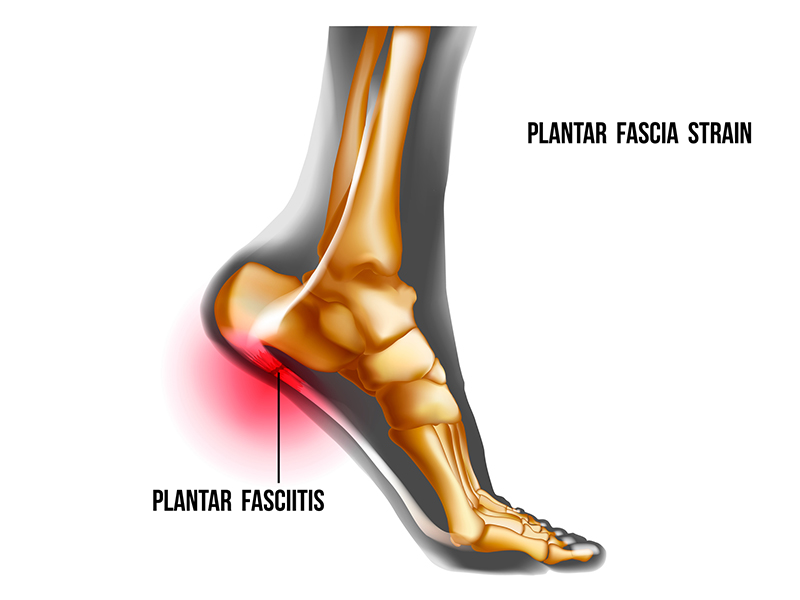What Is Plantar Fasciitis?
What is Plantar Fasciitis? We explore the causes, treatment and prevention of this common cause of heel pain


Plantar fasciitis is one of the most common causes of heel pain, affecting around 10% of the UK population at some point in their lives. Tiger Woods recently withdrew from The Masters citing that as the reason.
In the video and article below, we run through the symptoms of, and treatment options for, plantar fasciitis...
What is Plantar Fasciitis?
Plantar fasciitis occurs due to the inflammation of the plantar fascia, which is a strong ligament that supports the arch of the foot. The plantar fascia is designed to absorb the high stresses on the feet during activities like sport; too much pressure, however, can cause damage and pain. Risk factors for developing plantar fasciitis include increased activity, high impact activity, prolonged standing, flat feet, high feet arches, tight calves, and obesity.
People who suffer from this report symptoms of heel pain which is typically worse with the first few steps in the morning. There is also more pain reported after exercise or activity, but not during.

How do you stop plantar fasciitis from getting worse?
Non-surgical treatment options include RICE (rest, ice, compression, elevation); physiotherapy (exercise programmes, ice treatments, massages); night splints (most people sleep with their feet pointed down which relaxes the plantar fascia and is one of the reasons for the morning heel pain, while the splint at night stretches the plantar fascia while you sleep); and anti-inflammatory medication.
To prevent plantar fasciitis, and to help in decreasing pain, you can also perform calf stretches and plantar fascia stretches. Making stretches a consistent part of your golf preparation routine can help you feel fitter on the course.

Surgical treatment involves gastrocnemius recession, where the calves are surgically lengthened to decrease stress on the plantar fascia. Or a partial plantar fascia release where an incision at the bottom or side of the heel is made to relieve tension.
Subscribe to the Golf Monthly newsletter to stay up to date with all the latest tour news, equipment news, reviews, head-to-heads and buyer’s guides from our team of experienced experts.
It may also be worth checking you wear the best golf shoes for plantar fasciitis.

A lifelong golf fan, Andy graduated in 2019 with a degree in Sports Journalism and got his first role in the industry as the Instruction Editor for National Club Golfer. From there, he decided to go freelance and now covers a variety of topics for Golf Monthly.
Andy took up the game at the age of seven and even harboured ambitions of a career in the professional ranks for a spell. That didn’t pan out, but he still enjoys his weekend golf at Royal Troon and holds a scratch handicap. As a side note, he's made five holes-in-one and could quite possibly be Retief Goosen’s biggest fan.
As well as the above, some of Andy's work has featured on websites such as goal.com, dailyrecord.co.uk, and theopen.com.
What's in Andy's bag?
Driver: Callaway Mavrik Sub-Zero (9°)
3-wood: TaylorMade Stealth 2 Plus (15°)
Driving iron: Titleist U500 (17°)
Irons: Mizuno mp32 (4-PW)
Wedges: Titleist Vokey SM9 (50°, 54° and 58°)
Putter: Titleist Scotty Cameron Newport 2.5
Ball: TaylorMade TP5x